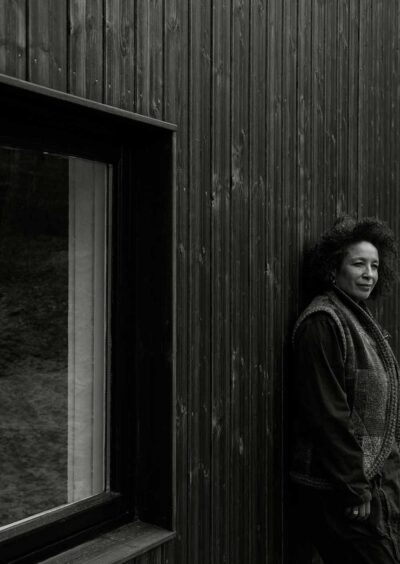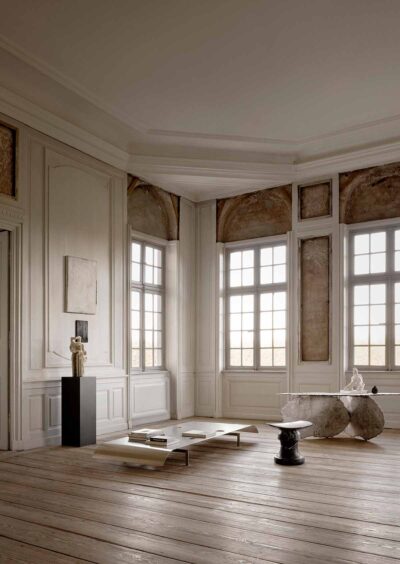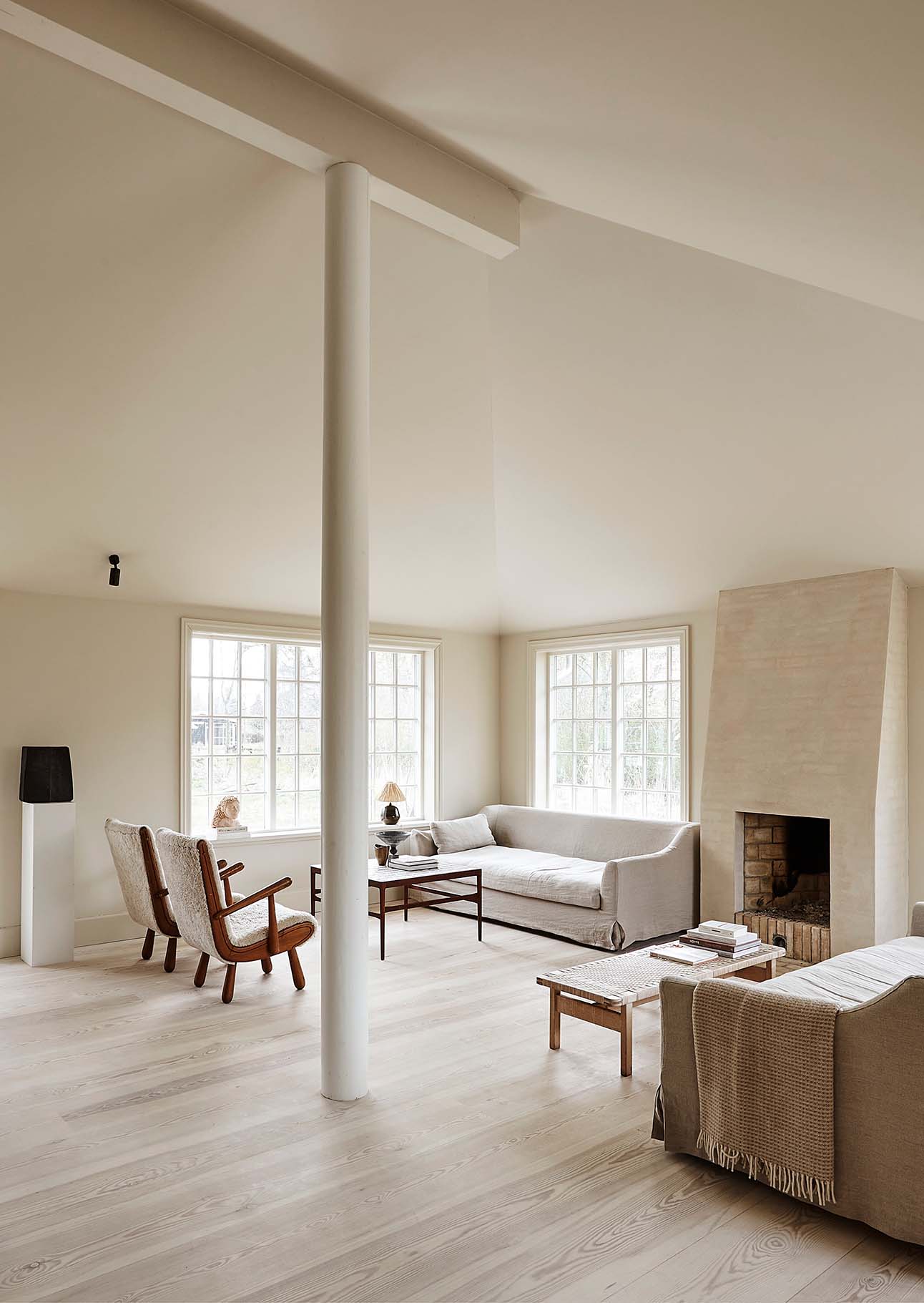
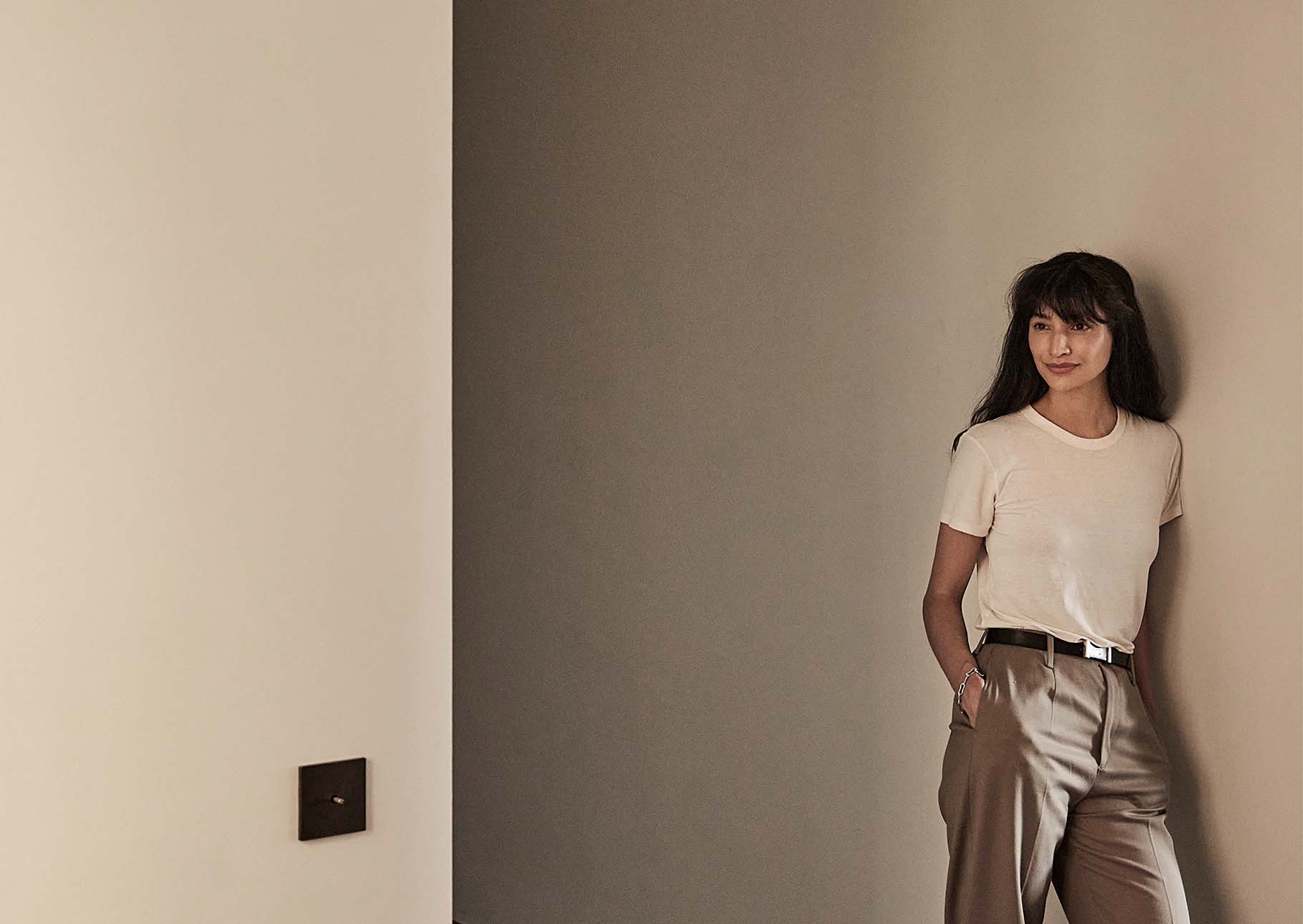
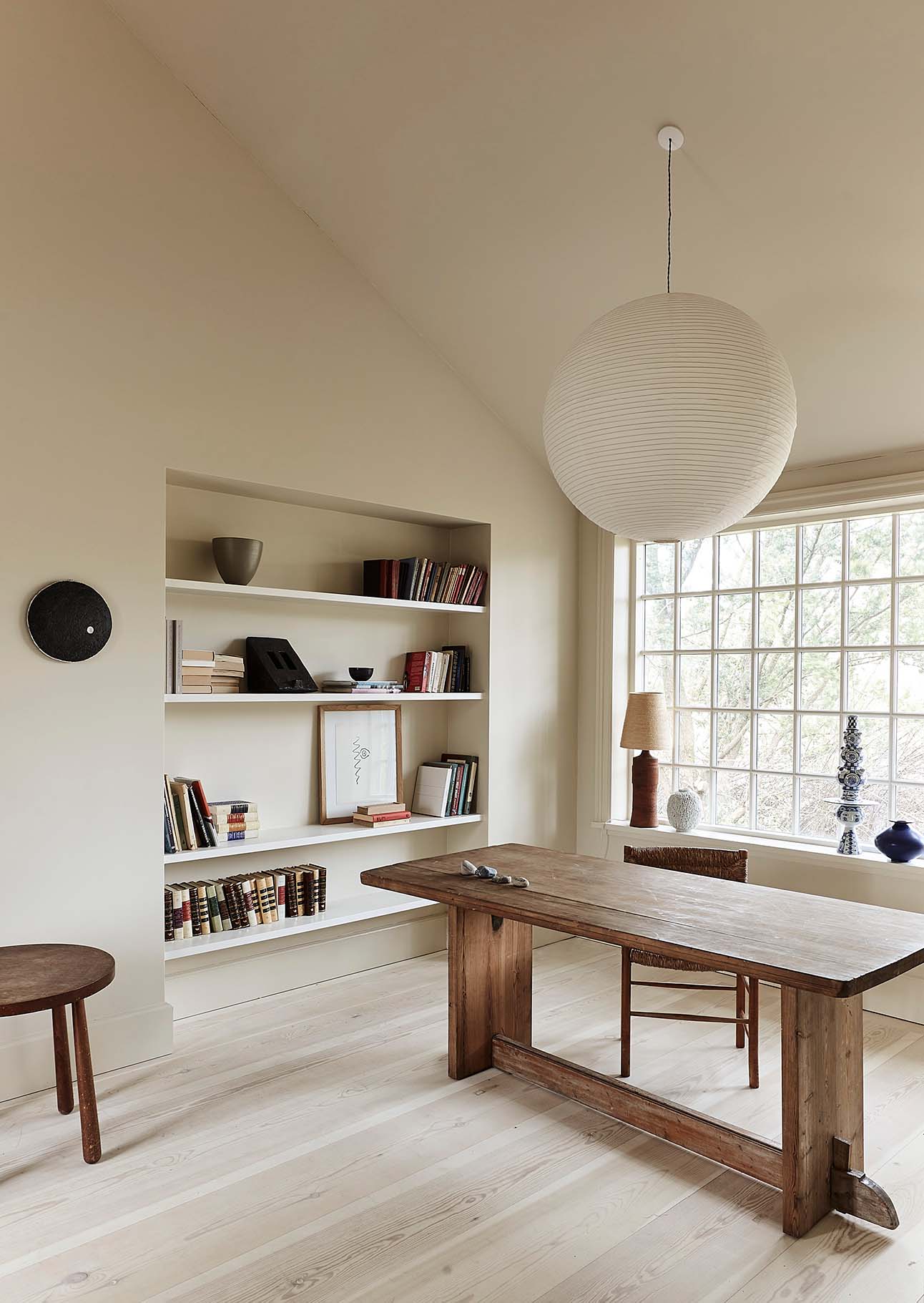
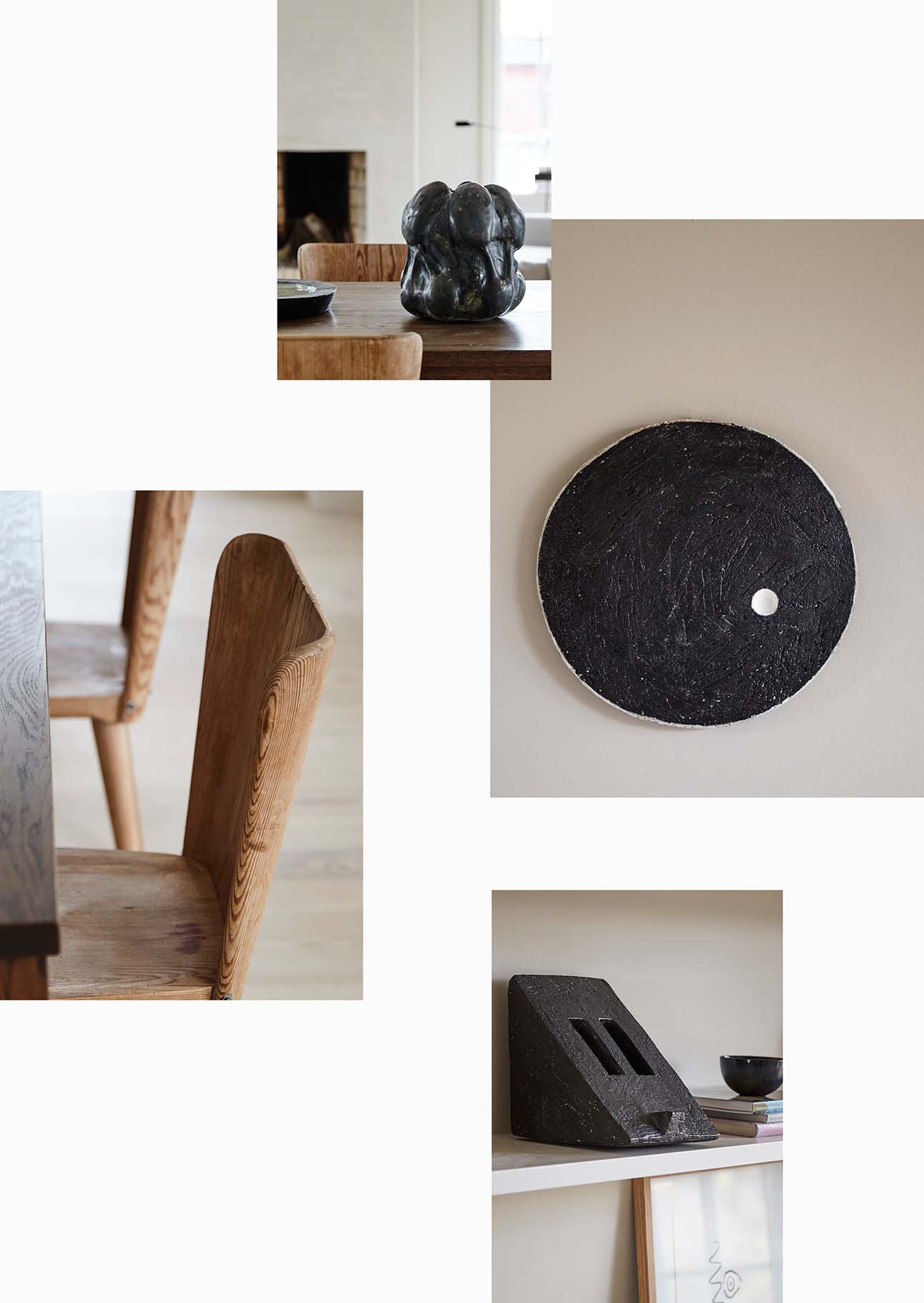
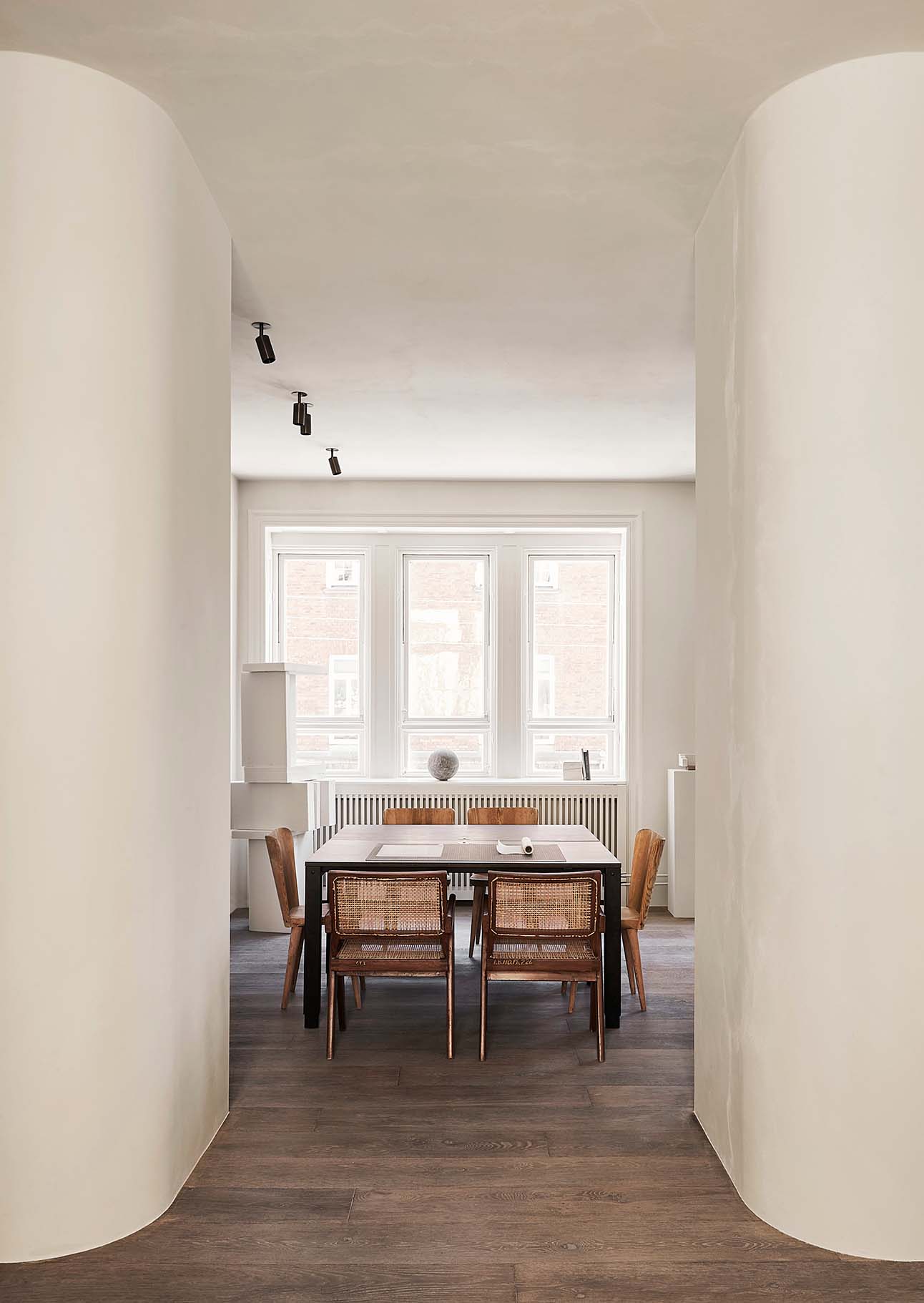
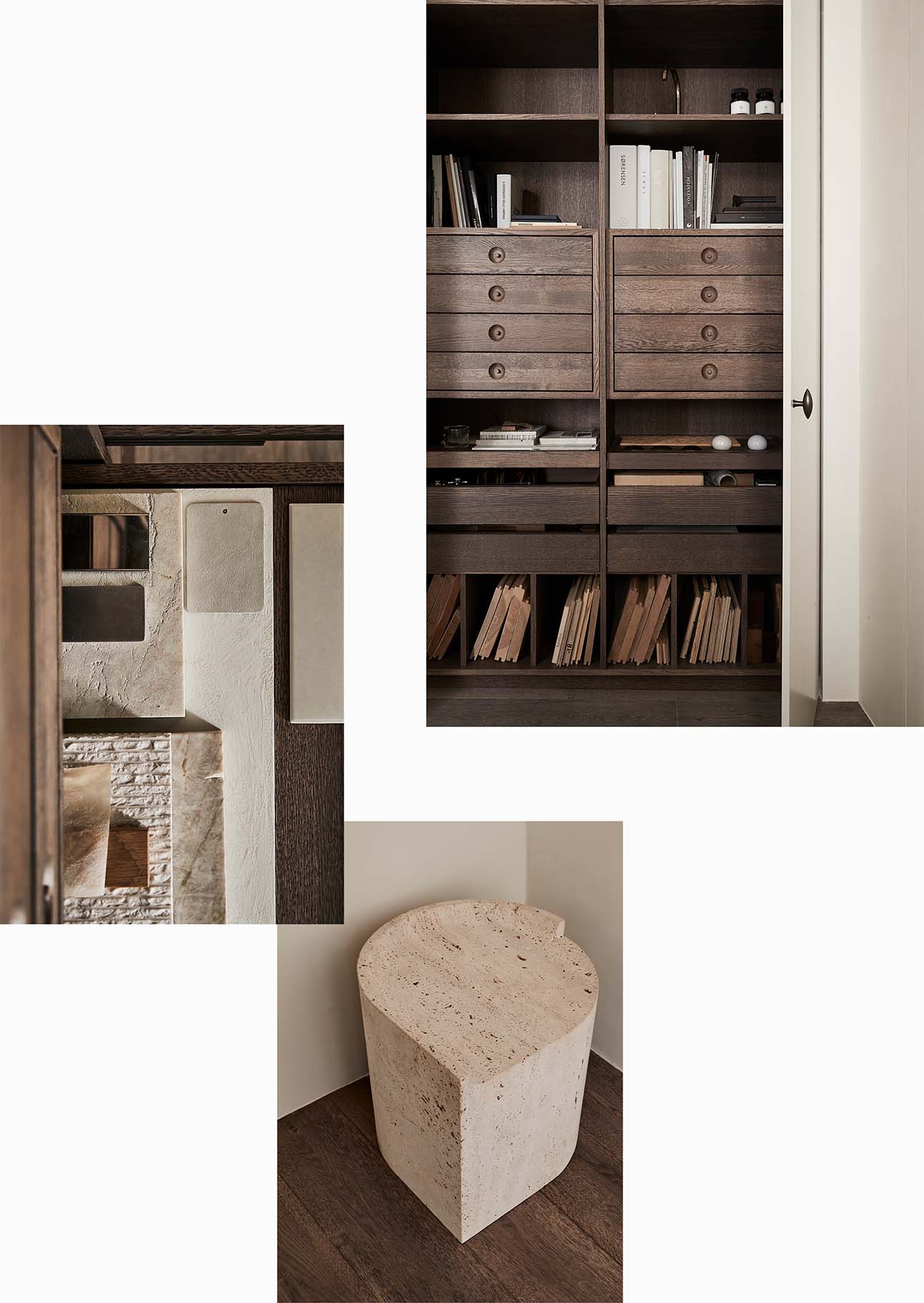
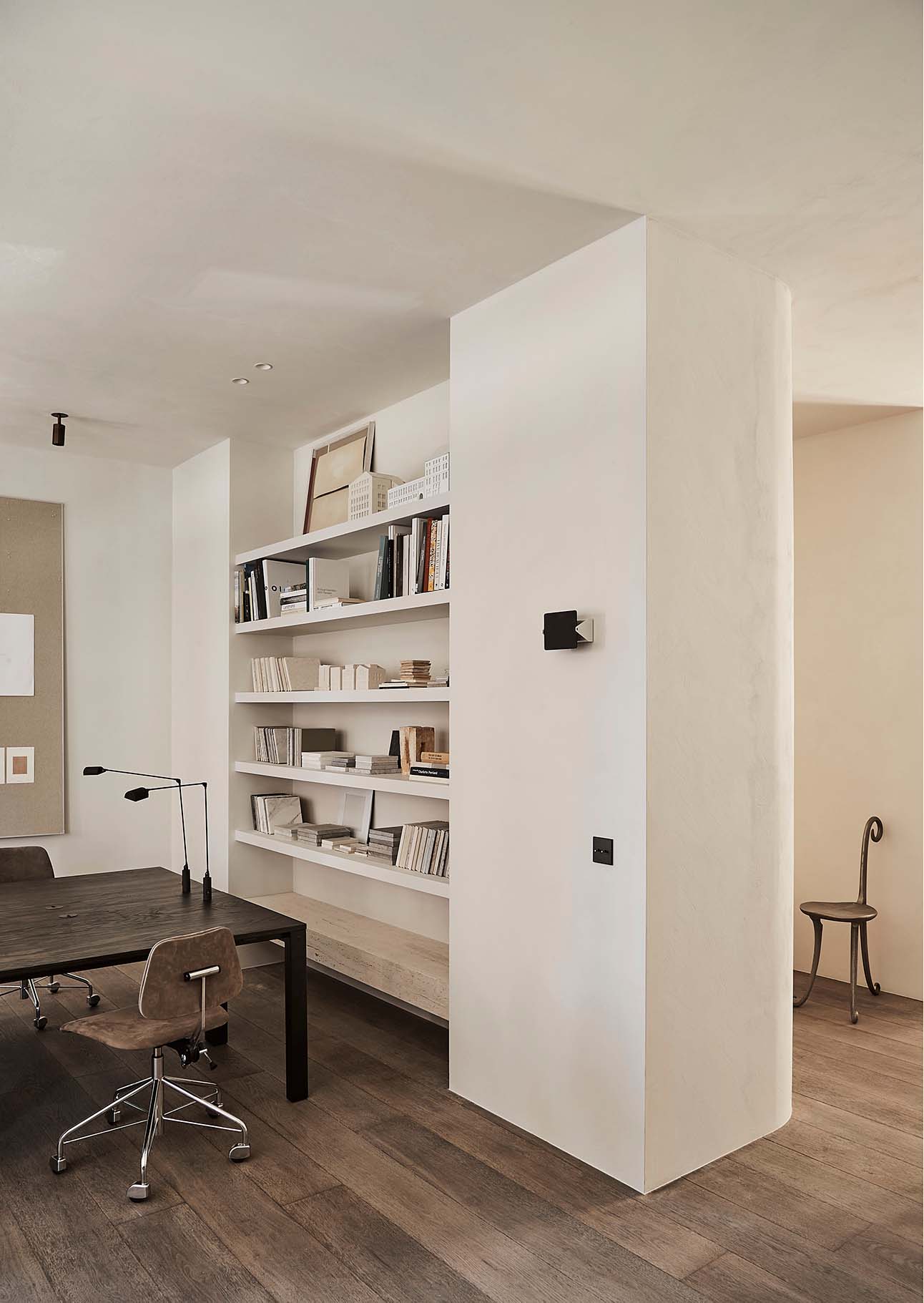
RECREATING HISTORY
— DANIELLE SIGGERUD
ARCHITECTURE
In personal as well as professional projects, Danielle Siggerud respects the past but also sheds and refines before creating tailored layers of significance. This methodology was applied by the Norwegian-born architect in the thoughtful remaking of both her Copenhagen studio and her family’s summer house.
In repairing and expanding the small cabin with an inky black facade typical of North Zealand, she became custodian of her family’s history and the many memories linked to the house; a project charged with affection and a sense of belonging.
“I have kept the same view as we had in the old house, the orientation of things. The old trees are still the same, so is the light that beams through the windows at a particular time of the day. The spirit of the old house lingers.”
Keeping key elements, the L-shape of the house, the north-lying bedrooms, the layout of the kitchen and bricks from the original fireplace incorporated into the new, she elevated certain features while down-playing or wholly removing others. Furniture, lamps, paintings and ceramics then moved back, joined by more recent finds from auction houses and markets.
Siggerud, who was educated in Denmark and who had worked in John Pawson’s London office, often handles historical sites, a responsibility handled with creative rigour and grace, retaining certain age-old details yet recognizing that the needs clients will have changed drastically and require radical intervention.
Her studio space in central Copenhagen, in a building that has remarkable traces of Danish 18th-century city architecture, has handsome tall windows and evocatively textured walls painted with white chalk paint blended with plaster. She introduced two monumental rounded corners that lead to the heart of the office that is furnished with contemporary and mid-century classics with sculptural models and prototypes from projects dispersed through the space, alongside some of her own furniture designs and extensive ceramic collection.
See how the sense of history lingers in the old holiday house and the studio after their transformations, in Ark Journal VOL VI.
By Helle Walsted
Photographer Wichmann + Bendtsen
Words Alisa Larsen
ZUCCHETTI AND FRIENDS
A custom-built showroom in Milan exhibits new design-driven Zucchetti collections like works of art.
JOURNEY’S END
A 90s portable church has found its home on a secluded hill in the forest, becoming a contemporary respite for creation and reflection for Josephine Akvama Hoffmeyer.
CASE STUDY
— DISSONANT BEAUTY
As in music, interior design calls on many elements – rhythm, contrast, repetition – to create that most subjective of visions: beauty.

RECREATING HISTORY
— DANIELLE SIGGERUD
ARCHITECTURE
In personal as well as professional projects, Danielle Siggerud respects the past but also sheds and refines before creating tailored layers of significance. This methodology was applied by the Norwegian-born architect in the thoughtful remaking of both her Copenhagen studio and her family’s summer house.
In repairing and expanding the small cabin with an inky black facade typical of North Zealand, she became custodian of her family’s history and the many memories linked to the house; a project charged with affection and a sense of belonging.
“I have kept the same view as we had in the old house, the orientation of things. The old trees are still the same, so is the light that beams through the windows at a particular time of the day. The spirit of the old house lingers.”
Keeping key elements, the L-shape of the house, the north-lying bedrooms, the layout of the kitchen and bricks from the original fireplace incorporated into the new, she elevated certain features while down-playing or wholly removing others. Furniture, lamps, paintings and ceramics then moved back, joined by more recent finds from auction houses and markets.
Siggerud, who was educated in Denmark and who had worked in John Pawson’s London office, often handles historical sites, a responsibility handled with creative rigour and grace, retaining certain age-old details yet recognizing that the needs clients will have changed drastically and require radical intervention.
Her studio space in central Copenhagen, in a building that has remarkable traces of Danish 18th-century city architecture, has handsome tall windows and evocatively textured walls painted with white chalk paint blended with plaster. She introduced two monumental rounded corners that lead to the heart of the office that is furnished with contemporary and mid-century classics with sculptural models and prototypes from projects dispersed through the space, alongside some of her own furniture designs and extensive ceramic collection.
See how the sense of history lingers in the old holiday house and the studio after their transformations, in Ark Journal VOL VI.
BY HELLE WALSTED
PHOTOGRAPHER WICHMANN + BENDTSEN
WORDS ALISA LARSEN







